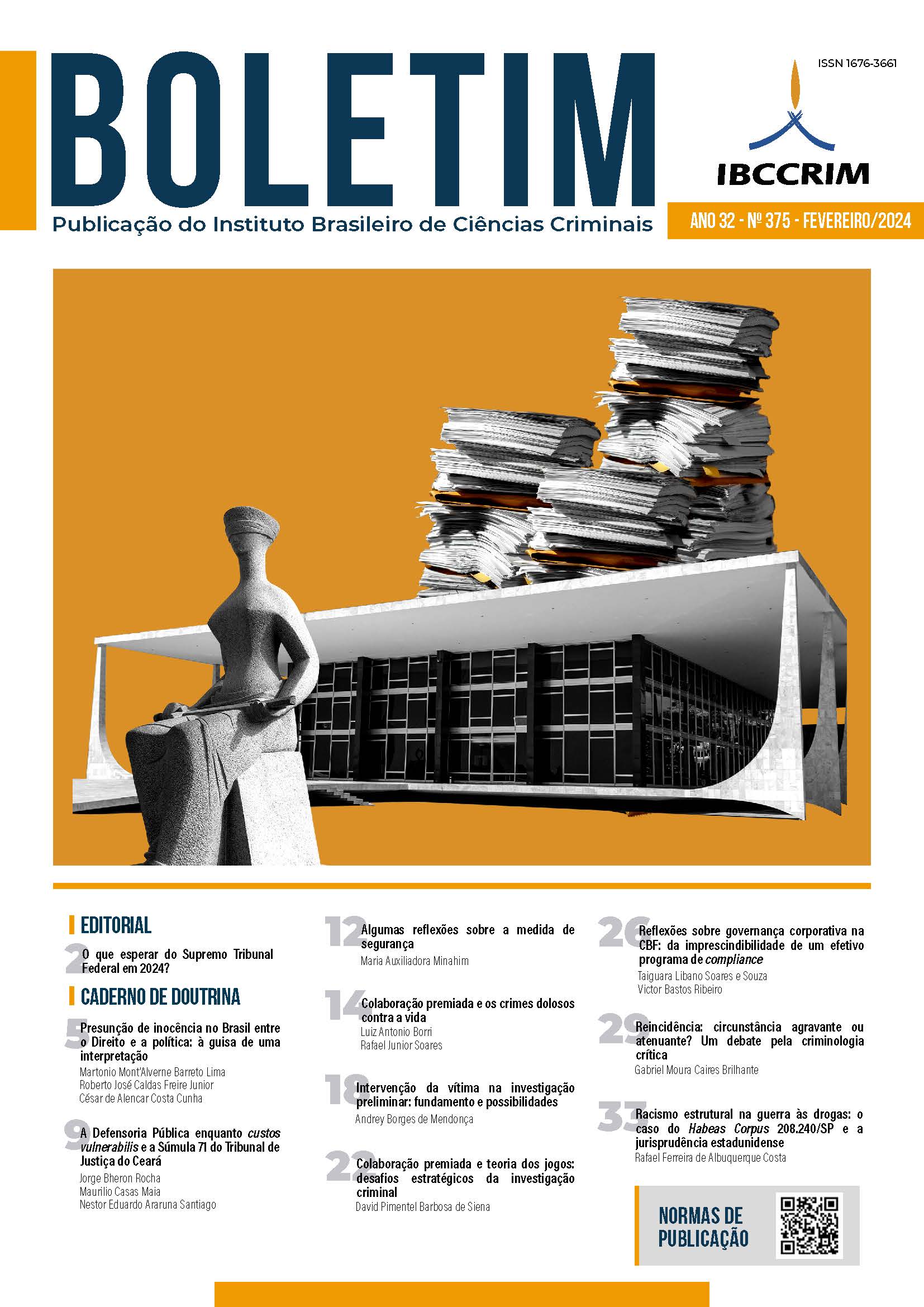Structural racism on war on drugs: the Habeas Corpus 240,208/SP and the United States jurisprudence
Views: 216DOI:
https://doi.org/10.5281/zenodo.10530152Keywords:
Mass incarceration, Reasonable suspicion, Racial profilingAbstract
This article aims to compare the American jurisprudence on personal searches related to felony drugs and the discussion about racial profiling at the Brazilian Supreme Court through the Habeas Corpus 208,240/SP. The work’s methodology girded bibliographic and jurisprudential review. The strict policy and laws about drugs in the United States, which led them to the largest incarcerated population in the world, reveal the importance of that matter. The trial’s result may indicate the delicate prison situation paths in Brazil.
Downloads
Publication Facts
Reviewer profiles N/A
Author statements
- Academic society
- Instituto Brasileiro de Ciências Criminais
- Publisher
- IBCCRIM
References
ALEXANDER, Michelle. A nova segregação: Racismos e encarceramento em massa. Tradução: Pedro Davoglio. São Paulo: Boitempo, 2018.
BARATTA, Alessandro. Criminologia crítica e crítica do Direito Penal: Introdução à sociologia do direito penal. Tradução: Juarez Cirino dos Santos. 6. ed. 2. reimpr. Rio de Janeiro: Revan, 2011.
BENTO, Cida. O pacto da branquitude. São Paulo: Companhia das Letras, 2022.
FÓRUM BRASILEIRO DE SEGURANÇA PÚBLICA. Anuário Brasileiro de Segurança Pública, Fórum Brasileiro de Segurança Pública, 2022. Disponível em: https://forumseguranca.org.br/wp-content/uploads/2022/06/anuario-2022.pdf. Acesso em: 10 jan. 2024.
LAGRECA, Amanda; BARROS, Betina e SENNES, Iara. As 820 mil vidas sob a tutela do Estado. In: Fórum Brasileiro de Segurança Pública. Anuário Brasileiro de Segurança Pública, 2022.
RAMOS, Silvia et al. Pele-alvo: a bala não erra o negro [e-book]. Rio de Janeiro: CESeC, 2023.
SUPREMO TRIBUNAL FEDERAL. Pleno - Bloco 2 - Validade de prova obtida em busca pessoal baseada na cor da pele - 1/3/23. Youtube, 01 mar. 2023. Disponível em: https://www.youtube.com/watch?v=0ydHeb9SjtI. Acesso em 11 jul. 2023.
Downloads
Published
How to Cite
Issue
Section
License
Copyright of published articles belongs to the author, but with journal rights over the first publication and respecting the one-year exclusivity period. Authors may only use the same results in other publications by clearly indicating this journal as the medium of the original publication. If there is no such indication, it will be considered a situation of self-plagiarism.
Therefore, the reproduction, total or partial, of the articles published here is subject to the express mention of the origin of its publication in this journal, citing the volume and number of this publication. For legal purposes, the source of the original publication must be consigned, in addition to the DOI link for cross-reference (if any).


 Português (Brasil)
Português (Brasil)
 English
English
 Español (España)
Español (España)






